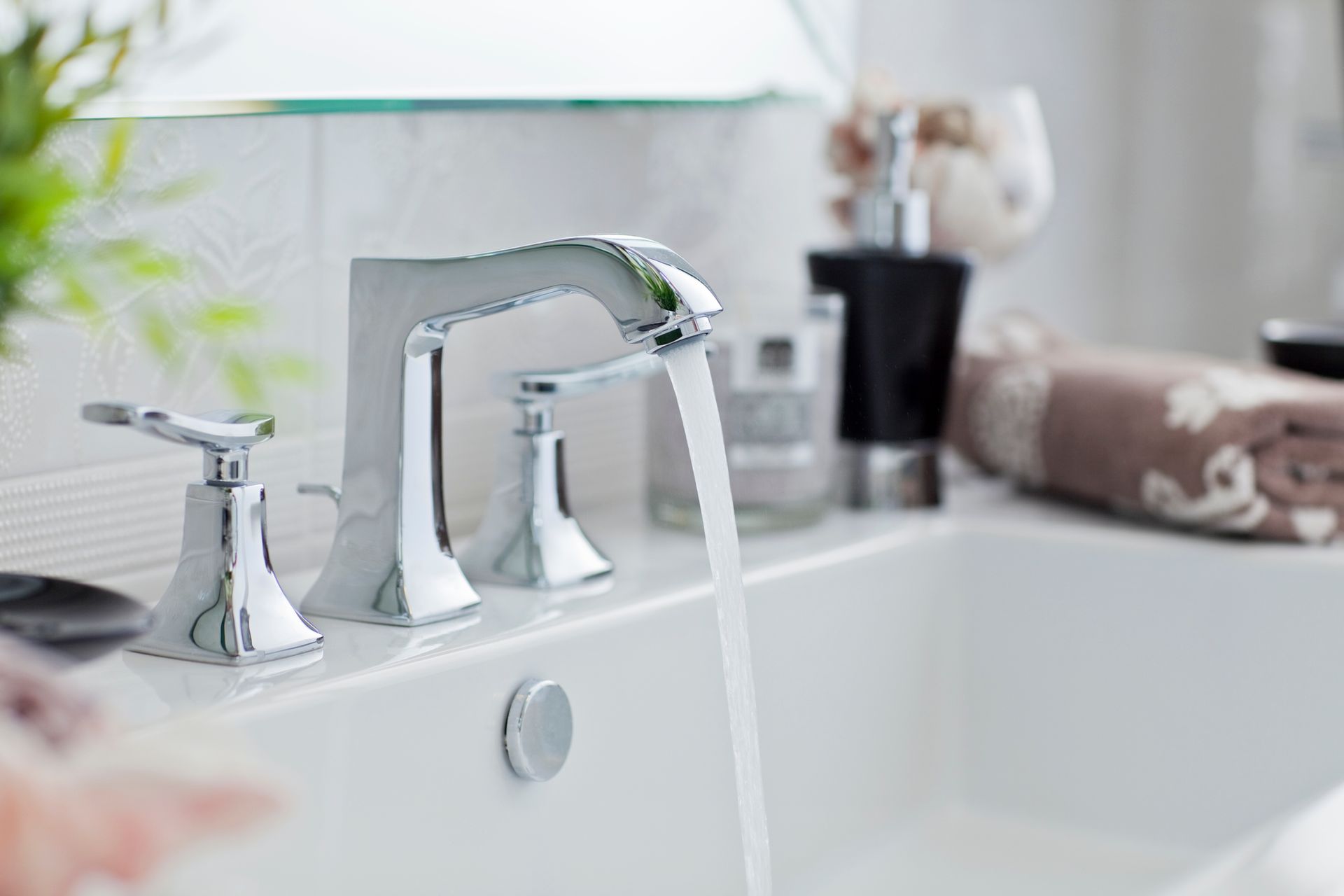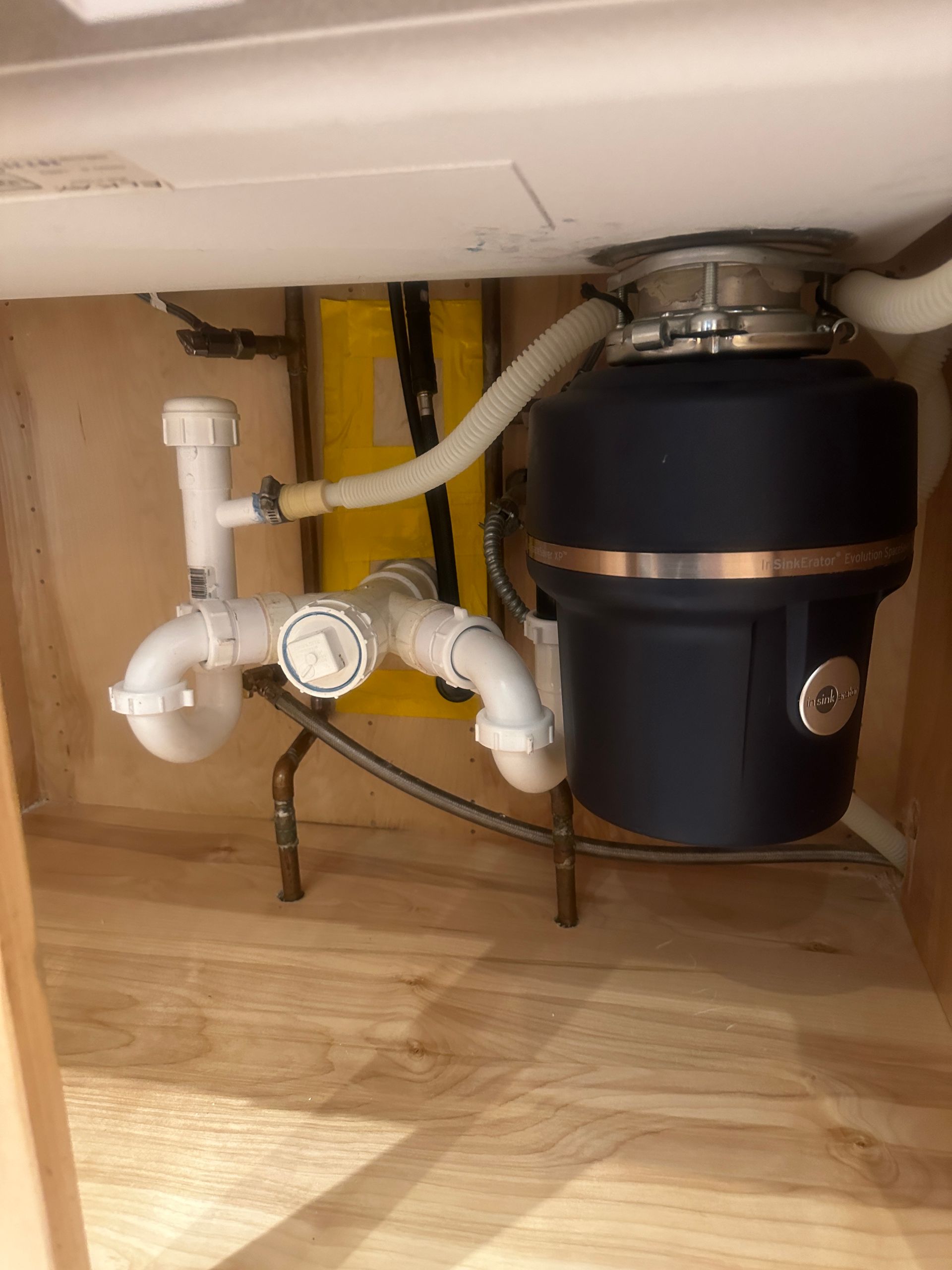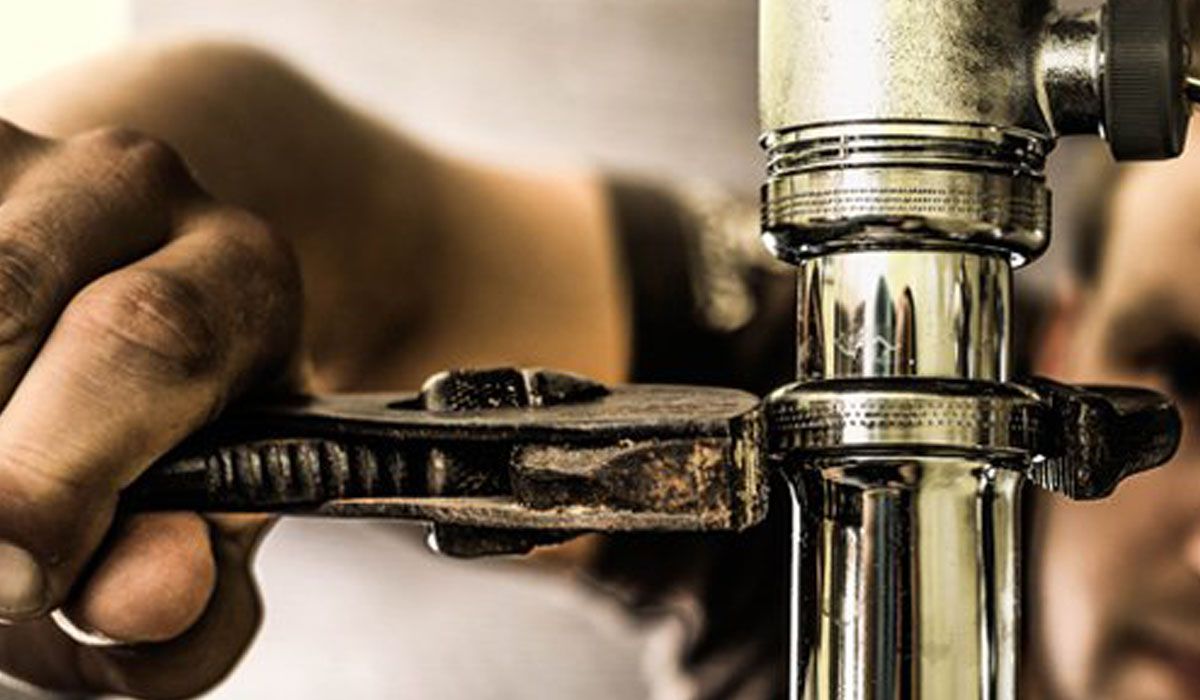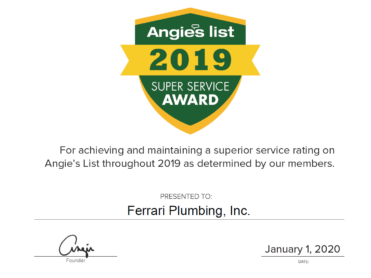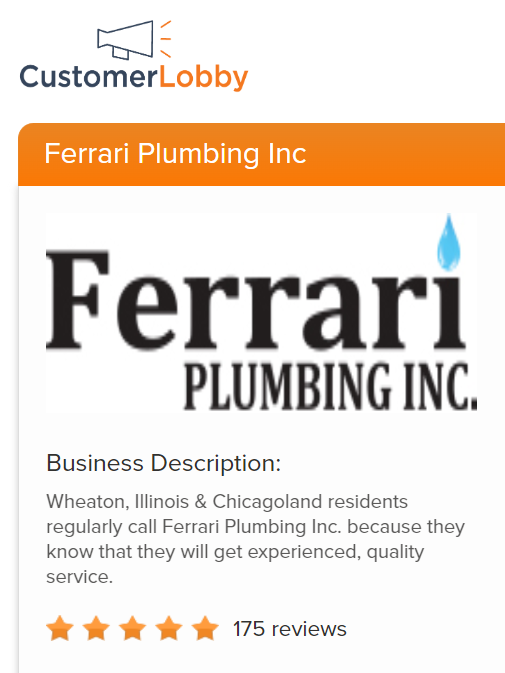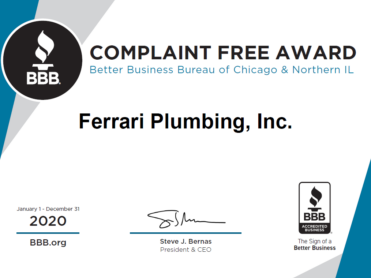10 Tips To Keep Pipes From Freezing
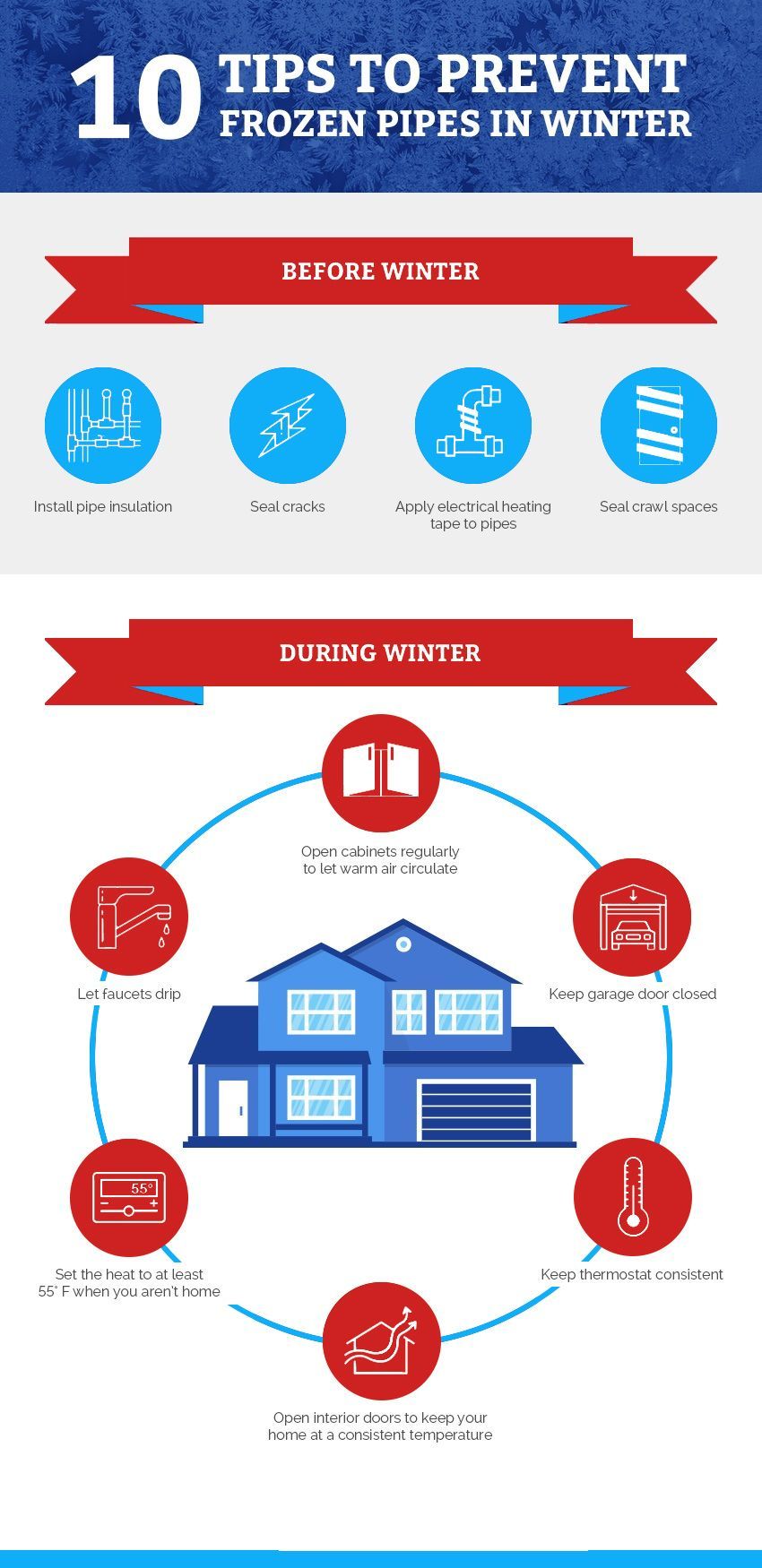
1. Insulate Pipes
The best way to keep your pipes from freezing is to purchase specifically designed pipe insulation. Pipe insulation is often remarkably inexpensive, and it is a small investment compared to the repair costs of a burst water pipe. When insulating your water system, pay particular attention to pipes in unheated, interior spaces of your home, such as in your attic, garage or basement.
The most common kinds of pipe insulation are made from fiberglass, polyethylene or foam. If a cold weather is headed your way and you need emergency insulation, you can use duct tape and wadded up newspaper for a temporary solution.
2. Keep Garage Doors Closed
One way to keep your pipes from freezing is to keep garage doors closed. This one is especially important if water supply lines go through the garage — most often, garages feature high amounts of smooth concrete, which keep the space cold. The space is cold enough without letting in more freezing air, which will drop the overall temperature of the garage. A garage door accidentally left open leaves any water supply lines vulnerable to freezing temperatures, which is a disaster waiting to happen.
3. Open Cabinets
Periodically, open your bathroom and kitchen cabinets to keep warm air circulating around the plumbing. The heated air will help prevent ice blockages and pressure buildups in the pipes. If you are expecting a particularly cold night, opening up your cabinets before you go to bed can help keep your pipes clear and warm despite the freezing temperatures.
If you have small children or curious pets in your home, make sure to remove all household chemicals or toxic cleaners from the cabinets before leaving them open.
4. Let Faucets Drip
One way to keep pipes from freezing is to leave a faucet running. You don’t have to turn on all the faucets in your home. First, determine which ones are fed by exposed piping. Once you’ve narrowed it down, leave these few faucets on during especially bitter weather. Running water, even a small trickle, carries more internal energy than standing water. Because of the friction created by the constant movement, moving water produces a small amount of heat and is harder to freeze than standing. By just leaving a few faucets running, the movement will help prevent ice blockages from forming in your plumbing.
Even more than the small amount of friction and heat produced by moving water, a running faucet relieves pressure build up in cold pipes. This helps to keep your pipes from bursting, even if the water inside freezes. If both hot and cold water lines are exposed, leave both slightly running to make sure pressure doesn’t build up in one and not the other.
5. Keep Pipes Thermostat Consistent
One of the best ways to prevent ice blockages is to keep your thermostat set to the same temperature during the day and the night. While many homeowners tend to lower their thermostats during the evening to save money on their heating bill, the strategy may ultimately backfire — a burst pipe costs much more than a slightly higher bill.
Instead, try to keep pipes thermostat settings as consistent as possible during the day and the night. Since steady temperatures will help keep your pipes free of ice, avoid any sudden changes in the environment of your home.
6. Seal Cracks and Openings
Inspect your home for any holes, cracks or openings before winter to stop any drafts from freezing your water systems.
Check around windows and door frames for any cracks, and examine any cable holes in your walls and floors, such as ones for television, Wi-Fi or cable wires. Seal any openings around the sill plates, where your house rests on its foundation. Caulk any cracks or holes directly around piping, both on exterior and interior walls. This helps keep warm air contained, and besides preventing ice blockage, it will increase your home’s insulation.
7. Leave the Heat On
If you plan on leaving your home during the winter, make sure you leave your heat on while you’re away. Turning on your heat for an empty house may seem counterintuitive. But while a lower temperature may reduce your heating bill, it could mean disaster if a cold temperatures hit, and your pipes freeze and burst.
This doesn’t mean you have to keep your house as warm as normal — any temperature 55 degrees or higher is appropriate to keep your pipes safe.
8. Open Interior Doors
Another way to keep your home a consistent temperature is to keep all interior doors open. Pipes are often located in bathroom and kitchen cabinets, many times in the central spaces of your home. However, even these pipes are vulnerable to freezing — to some degree, most homes have an uneven distribution of warmth throughout the structure.
To help keep heat evenly and consistently spread around your home, keep interior doors open. This invites air circulation to move warm air from room to room and is a useful strategy during cold snaps.
9. Seal Crawlspaces
If your winter looks like it will be especially bitter, you will probably need to temporarily cover any ventilated crawl spaces in your home.
Covering crawl spaces can reduce the amount of cold air surrounding your pipes. To seal your crawl space, use foam pieces cut to the dimension of the vents. Secure them in place with duct tape, and you have an efficient and inexpensive solution for cold winter nights.
10. Use Heating Tape
For piping systems that are easily accessible, you can apply electrical heating tape directly to the pipe to help it retain heat. This can be especially helpful for pipes in unheated or exterior locations, such as in cold attics or basements.
There are two different kinds of heating tape you can use — self-monitoring and manual. The first type of heating tape has a sensor and turns on and off by itself whenever it senses that the pipe needs more heat. The manual type of heating tape requires you to plug it in whenever heat is needed and unplug it once the pipe is warm.
Like any heating system, electrical heating tape can be dangerous. Make sure to follow the manufacturer’s instructions and safety procedures when applying it to your pipe systems.
For any plumbing services, please give us a call at 630-260-5898 or fill out our form at https://ferrariplumbing.net/contact-us/
You might also like
